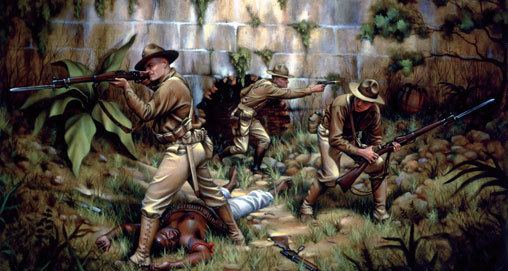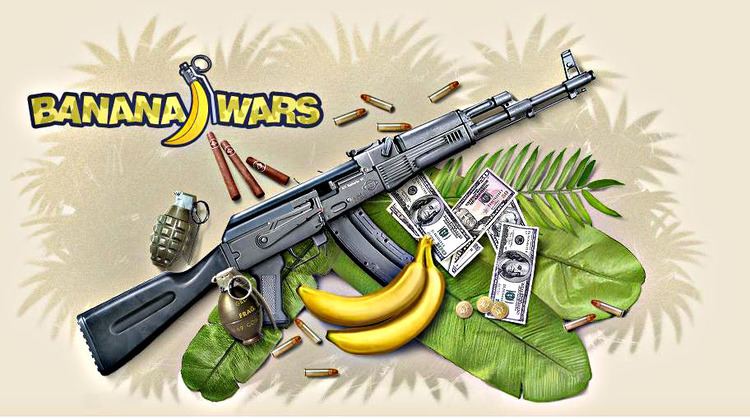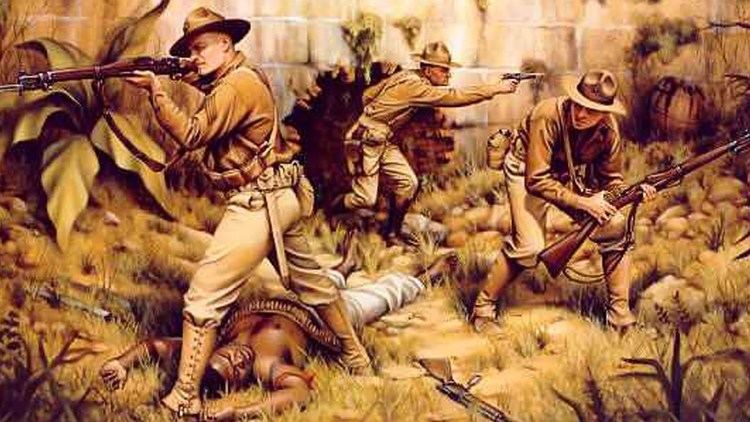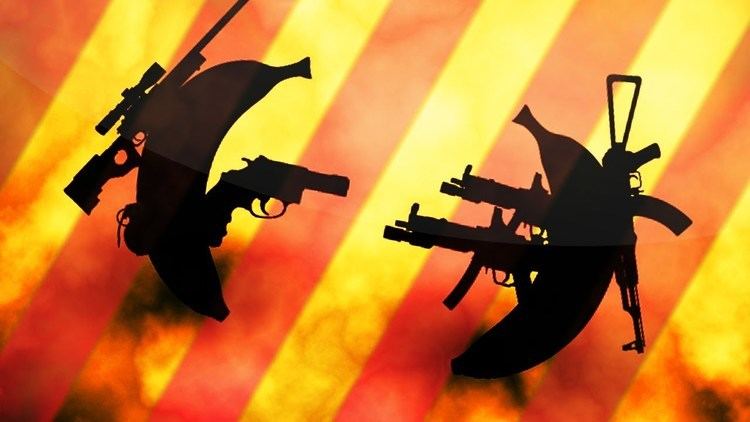 | ||
Similar United States occupatio, Spanish–American War, United States occupatio, United States occupatio, Border War | ||
Marines in the banana wars
Banana Wars is the term used by some historians since it was coined in 1983 to refer to the occupations, police actions, and interventions on the part of the United States in Central America and the Caribbean between the end of the Spanish–American War in 1898 and the inception of the Good Neighbor Policy in 1934. These military interventions were most often carried out by the United States Marine Corps, which developed a manual, The Strategy and Tactics of Small Wars (1921) based on its experiences. On occasion, the Navy provided gunfire support and Army troops were also used.
Contents
- Marines in the banana wars
- Lectures in history u s marines in the banana wars
- Origins
- Interventions
- American fruit companies
- Notable veterans
- References

With the Treaty of Paris, Spain ceded control of Cuba, Puerto Rico, and the Philippines to the United States. Thereafter, the United States conducted military interventions in Cuba, Panama, Honduras, Nicaragua, Mexico, Haiti, and the Dominican Republic. The series of conflicts ended with the withdrawal of troops from Haiti in 1934 under President Franklin D. Roosevelt.

Lectures in history u s marines in the banana wars
Origins

US motivations for these conflicts were largely economic and military. The term "Banana Wars" was coined much later to cast the motivations for these interventions as almost exclusively the preservation of petty US commercial interests in the region.

Most prominently, the US was advancing its economic, political, and military interests to maintain its sphere of influence and securing the Panama Canal (opened 1914) which it had recently built to promote global trade and to project its own naval power. US companies like the United Fruit Company also had financial stakes in the production of bananas, tobacco, sugar cane, and other commodities throughout the Caribbean, Central America and Northern South America.
Interventions

Other Latin American nations were influenced or dominated by American economic policies and/or commercial interests to the point of coercion. Theodore Roosevelt declared the Roosevelt Corollary to the Monroe Doctrine in 1904, asserting the right of the United States to intervene to stabilize the economic affairs of states in the Caribbean and Central America if they were unable to pay their international debts. From 1909-1913, President William Howard Taft and his Secretary of State Philander C. Knox asserted a more "peaceful and economic" Dollar Diplomacy foreign policy, although that too was backed by force, as in Nicaragua.
American fruit companies
The first decades of Honduras' history is marked by instability in terms of politics and economy. Indeed, the political context gave way to 210 armed conflicts between independence and the rise to power of the Carias government. This instability was due in part to the American involvement in the country.
The first company that concluded an agreement with the Honduras government was the Vaccaro Brothers Company (Standard Fruit Company). The Cuyamel Fruit Company then followed the lead. Furthermore, the United Fruit Company also agreed to a contract with the government, which contract was attained through its Subsidiaries (Tela Rail Road Company and Truxillo Rail Road Company).
There were different avenues that led to the signature of a contract between the Honduras government and the American companies. The most popular avenue would be to obtain exclusive rights to a piece of land in exchange of the completion of railroads in Honduras. It is, thus, the reason why it is a railroad company that conducted the agreement between the United Fruit Company and Honduras.
However, according to Mark Moberg, most banana producers in Central America (including Honduras) "were scourged by Panama disease, a soil-borne fungus (…) that decimated production over large regions". Typically, when a plantation would be decimated, the companies would abandon the plantation, and destroy the railroads (and other utilities) that they had been using along with the plantation. Therefore, one might argue that the exchange of services between the government and the companies was not always respected.
The ultimate goal in the acquisition of a contract was to control the process from production to distribution of the bananas. Therefore, the companies would finance guerrilla fighters, presidential campaigns and governments. According to Rivera and Carranza, the indirect participation of American companies in the country's armed conflicts worsened the situation. They argued that the presence of more dangerous and modern weapons gave place to more dangerous warfare among the different factions.
In British Honduras, modern-day Belize, the situation was slightly different. Despite the fact that the United Fruit Company was the sole-exporter of bananas in British Honduras and the company was also manipulating the government, the country did not suffer the instability and armed conflicts its neighbors experienced.
Notable veterans
Perhaps the single most active military officer in the Banana Wars was U.S. Marine Corps Major General, Smedley Butler, who saw action in Honduras in 1903, served in Nicaragua enforcing American policy from 1909–1912, was awarded the Medal of Honor for his role in Veracruz in 1914, and a second Medal of Honor for bravery in Haiti in 1915. In 1935, he denounced the role he had played, describing himself as "a high class muscle man for Big Business, for Wall Street and the bankers ... a racketeer, a gangster for capitalism".
Notable U.S. veterans of the Banana Wars include:
